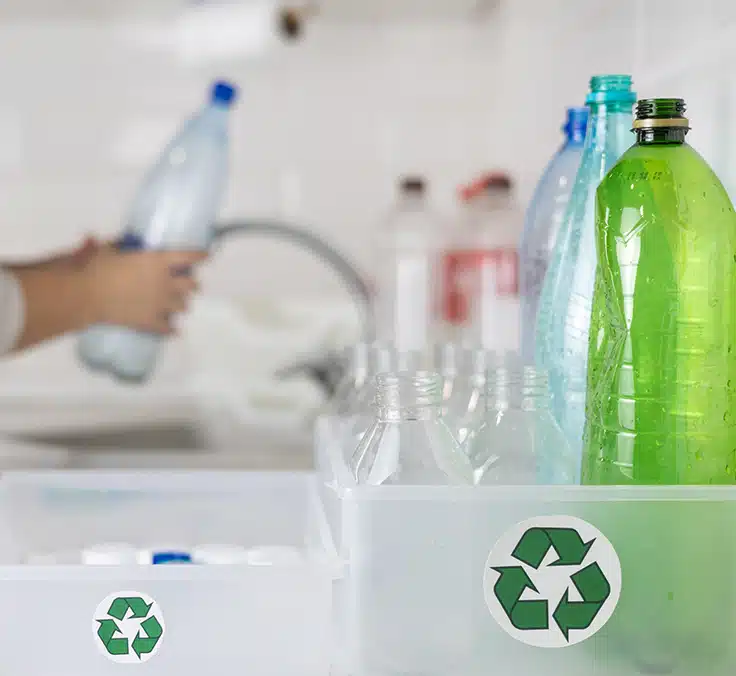SUSTAINABILITY | 03.21.2025
A single purchase can make a difference for the planet.
Each day, we make purchasing decisions that extend beyond our shopping cart. Whether it’s buying coffee or choosing a particular service, our choices can act as a vote in favor of sustainable practices and a commitment to the planet.
When we reflect on our recent purchases, it’s likely that we chose a brand based on its price, design, or even its story. However, beyond the label, every purchase decision carries environmental and social consequences. In fact, global environmental awareness has grown significantly in recent years. According to a report by IBM and the National Retail Federation, nearly 70% of all consumers are willing to pay more for sustainable products, while NielsenIQ’s The Changing Climate of Sustainability report reveals that 73% of consumers would change their habits to reduce their environmental impact. But do we truly understand the implications of every product or service we acquire?
Environmental concerns have evolved from being a mere debate to becoming a pressing priority. This is supported by the European Investment Bank’s Annual Climate Survey, where 94% of respondents believe Europe must adapt to climate change, and 66% see it as an absolute priority. According to the World Economic Forum, changes in consumer behavior and lifestyle could reduce global greenhouse gas emissions by up to 70% by 2050. Adopting sustainable shopping habits is essential—not only for the conservation of the environment and natural resources but also for protecting biodiversity, reducing waste, and combating climate change. It also has significant economic, social, health, and ethical implications. This is where the concept of “green shopping” comes in, which involves integrating environmental awareness into our purchasing decisions.
The color of sustainability
“Green shopping” refers to purchasing products and services that have a lower environmental impact compared to conventional options. It’s a conscious choice aimed at minimizing environmental harm and promoting responsible practices throughout the value chain. This approach encourages sustainability and corporate social responsibility, pushing companies to reduce their ecological footprint through the use of recycled materials, energy-efficient processes, and responsible production methods.
However, in a market flooded with eco-labels, not everything that claims to be green actually is. Sustainability has become a powerful marketing tool, but when it’s not backed by real actions, it can backfire on the brands using it. Green also takes the form of “greenwashing”—a form of ecological whitewashing. According to KPMG’s report The challenge of greenwashing: An international regulatory overview, global legal complaints about greenwashing have risen by 21% in the past year, reflecting increasing consumer backlash against such practices. This trend is also confirmed by Kantar’s Sustainable Sector Index study, which reveals that 72% of consumers are skeptical of brands that only engage with environmental issues for commercial reasons.
Changes in consumer behavior and lifestyle could reduce global greenhouse gas emissions by up to 70% by 2050 (World Economic Forum).
So, when we talk about “green shopping,” we’re focusing on more than just a label—we’re looking at the production process and the environmental impact of each product or service. It involves assessing the entire life cycle of what we consume, from raw material extraction to recycling or disposal, while considering the sustainable practices of the company behind it. By supporting green shopping, businesses reduce their dependence on fossil fuels and actively contribute to the shift toward a circular economy, where resources are used efficiently and waste is minimized. This leads to significant energy savings, heightened awareness of environmental challenges, and improved brand perception, all of which help strengthen consumer trust.
Corporate awareness
Many companies have recognized that their purchasing decisions have a significant impact on the environment and play a crucial role in the transition to a sustainable business model. Moreover, these actions can provide a competitive advantage. MAPFRE is a prime example, as we have committed to minimizing carbon emissions and energy consumption in all the countries where we operate. With the goal of becoming carbon-neutral by 2030, MAPFRE has developed the Corporate Environmental Footprint Plan 2021-2030, aiming to reduce our carbon footprint (TonCO2e) by 30% compared to the 2022 baseline. This roadmap includes initiatives such as reducing business travel (especially air travel) and transitioning to a fleet composed entirely of ECO vehicles to reduce the environmental impact of mobility. Another key focus is improving energy efficiency by prioritizing self-consumption of electricity from photovoltaic solar energy, along with other measures. Additionally, we have implemented circular economy policies that emphasize recycling, waste reduction, and the selection of suppliers who are committed to the planet.
MAPFRE has committed to minimizing its carbon emissions and energy consumption across all the countries where it operates.
Sustainability is considered a core pillar of the organization’s management, viewed as a strategic opportunity that creates both economic and social value while addressing the needs of customers and society at large. The key is for more companies to take on their role as agents of change, promoting an economic model in which growth aligns with respect for the planet. Organizations that authentically embrace these principles will contribute to environmental protection and enhance their ability to adapt to future regulations, while meeting the growing demand from investors and strategic partners committed to sustainability. Green shopping is not just a matter of social responsibility; it’s a critical pillar for long-term competitiveness and business success.
RELATED ARTICLES:




